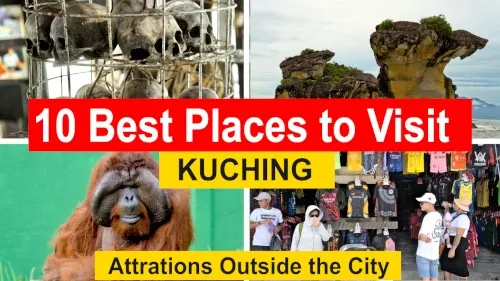
Kuching is the capital of the state of Sarawak, Malaysia. I have visited Kuching several times, but mostly for work, where I spent time meeting clients. This time, I have decided to stay for a week solely for leisure and explore the places around Kuching I have yet to visit.
In this article, I will focus on places to visit within one and a half hours' driving distance from the city. I recommend getting a tour guide or self-driving as they are outside the city. The traffic in rural areas of Kuching is not congested, and driving is quite easy.
The list below is not arranged in order of priority but by the time I visited each place. I will cover other places within the city in a separate article.
Note: The above ten places are places that we visited located on the outskirts of Kuching and beyond. We have a separate article providing the details of each place. If you are interested in knowing what these places are, read our articles that specifically mention places to visit within the city.
1. Bako National Park
Bako National Park is the most famous national park in the region. It is the perfect choice if you only have time to visit one national park.

The reason is simple: we get to see stunning sea stacks. In addition, we did not just trek in the jungle but also took a boat out to the sea and arrived at Teluk Pandan Kecil, where we witnessed the trademark rock formations carved by the waves over hundreds of years.

Afterward, we returned to the National Park headquarters and spotted the bearded pigs, proboscis monkeys, and long-tailed macaques. Apart from witnessing rare species of animals and watching the magnificent sea stacks on the shore, we also explored two jungle trails. One of the trails leads to beaches and mangrove forests. Besides we also saw green pit vipers and many different types of insects during our visit.
Check out our article on our day trip to Bako National Park here.

2. Sarawak Cultural Village
If you're interested in culture or want to learn more about the different tribes living in Sarawak, visiting the Sarawak Cultural Village is a must.
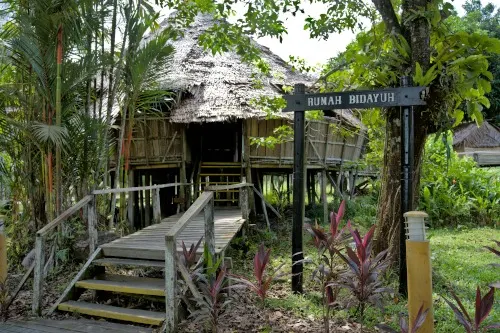
We were here to learn about the cultures of various tribes. Each tribe has a separate model house, a replica of their traditional house. We went inside these houses and observed their structure, architecture, decoration, and the things they use daily. We even try some of the traditional snacks they prepare.
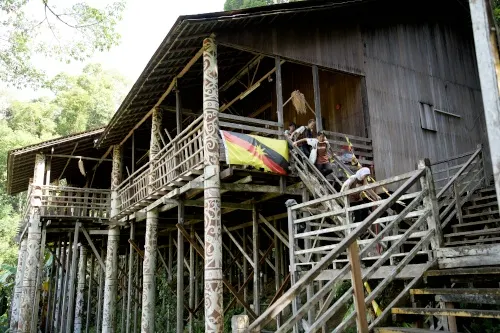
However, since there won't be anyone at these houses to give you a full explanation, it is recommended that you hire a guide who is proficient in the different cultures of these tribes. This way, you can fully appreciate and understand what you have seen.
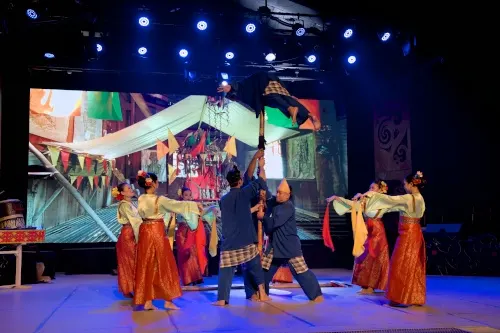
After visiting all the houses, we proceeded to the main performance stage, where dancers from all different tribes performed a special show comprised of various traditional dances.
3. Semenggoh Wildlife Centre
We were eager to see orangutans in the wild, so we headed to Semenggoh Wildlife Center.

After purchasing the entrance tickets, we hopped onto the buggy and entered the forest. Our goal was to get close to the orangutans at the feeding station, but on the way, a ranger spotted one on the Masing Trail.
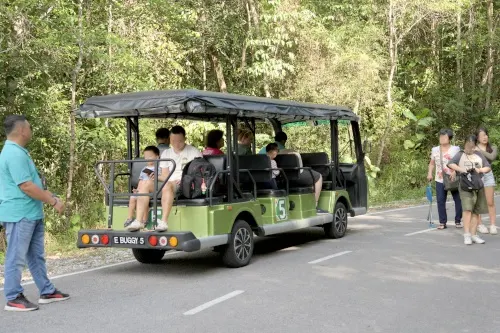
We quickly changed course and followed the ranger on the trail for about 15 minutes until we reached a spot where an orangutan was playing high up in a tree, eating fruits thrown up by the ranger. It was fascinating to watch the orangutan jump from one branch to another and enjoy its natural habitat. This experience was far more satisfying than seeing sad-looking orangutans in cages.
4. Annah Rais Longhouse
If you visit Kuching, Sarawak, missing out on visiting one of the longhouses would be a shame.
During our trip, we visited the longhouses at Kampung Annah Rais, a friendly Bidayuh community village where most people follow the Christian faith. Most of them speak fluent English, which makes communication easy.
They welcome visitors from all over the world, and some families have even turned their homes into homestays, where you can stay and experience the actual living style, conditions, and environment of the village.

(Photos with Uncle Louis and Aunty Joaanne at their homestay)
As we arrived at the village, we were warmly welcomed by Uncle Louis, the proprietor of Karum Bidayuh Homestay. He guided us through the longhouse, introducing us to fascinating traditional elements.
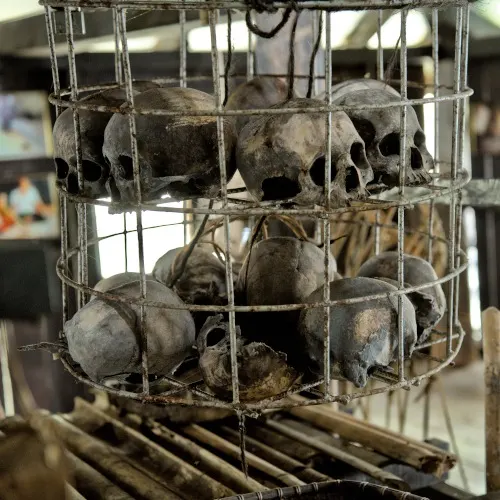
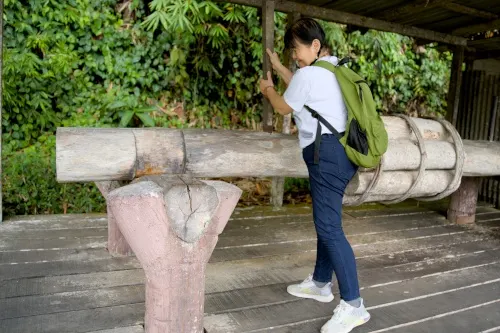
Among these were the age-old sugar cane crusher and the Panggah, also known as the house of the skull, an integral part of their rich cultural heritage.
The flooring of the longhouse is mostly made of bamboo, but over time, some parts of the flooring have been replaced with cement and metal to make it more durable. We deeply hope the original culture of using bamboo as flooring will still be preserved.

We were privileged to share a meal with Uncle Louis and his wife, Auntie Joanne. They prepared special dishes for us, including their signature bamboo chicken and a unique pumpkin with dry shrimp dish. The meal was not just food; it was a delightful exploration of the local cuisine, a culinary adventure that added to the richness of our cultural immersion.
5. Kubah National Park and Matang Wildlife Centre
If you enjoy jungle trekking, Kubah National Park is worth a visit. The park offers a variety of trails, ranging from easy to more challenging ones. During our visit, we opted for an easy trail that took about one and a half hours to reach a waterfall.
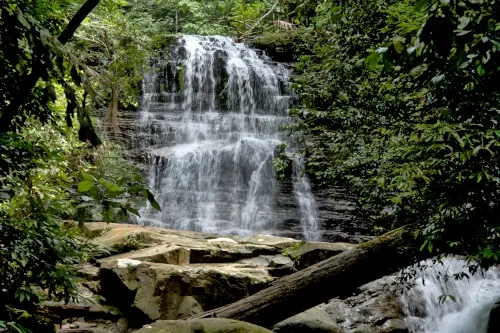
Other trails are available, including one that leads to the Matang Wildlife Reserve. Since we didn't have time to take that path, we drove to Matang Wildlife Reserve the following day.
The Matang Wildlife Centre, part of Kubah National Park, is home to endangered wildlife in large enclosed rainforest areas or spacious cages. The center's main attraction is the orangutan adoption program, where young orangutans who were either orphaned or rescued from captivity are taught how to survive in the wild.
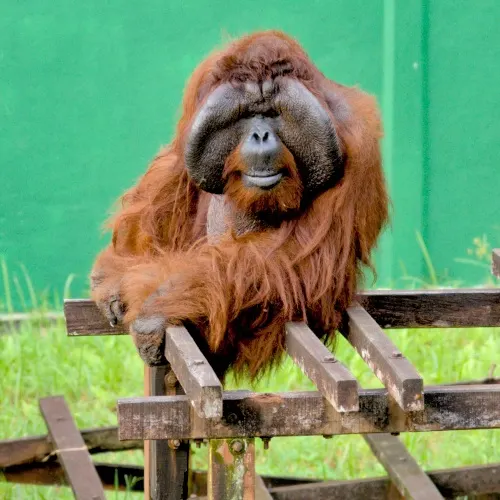
The star attraction here is undoubtedly the orangutan. One of the male orangutans living in the center is Aman. Aman was purchased from a market in Sarawak in early 1989. He became a pet for three months before being surrendered to Semengguh Wildlife Rehabilitation Center in April of the same year.
Aman has had several incidents during his life, including being caught in a fight with the dominant male named Ritchie, who beat off his right index finger and bit through an electrical power cable, causing him to blind.
Due to his blindness, a decision was made in December 2000 to relocate Aman from Semengguh Wildlife Centre to the Matang Wildlife Center. During his stay at the center, Aman underwent cataract removal surgery and has since fully recovered his eyesight.
Unfortunately, being blind for ten years has made it difficult to undergo a rehabilitation program, so he now remains on display for public viewing, educational purposes, and research.
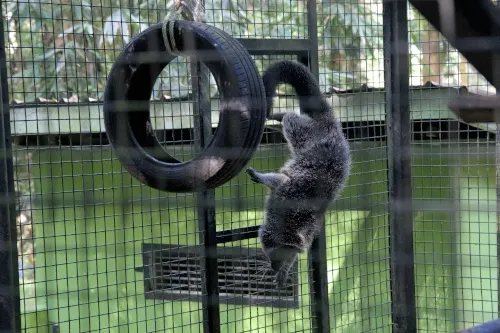
In addition to orangutans, we also saw crocodiles, porcupines, pythons, deer, binturong, pig-tailed macaques, and sun bears.
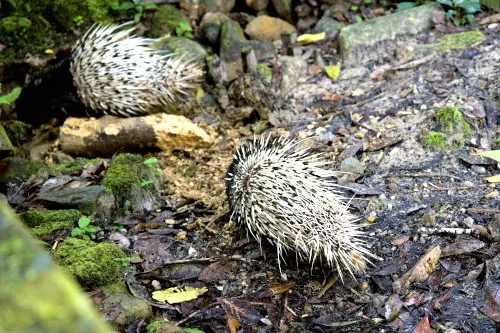
6. Fairy Cave
Fairy Cave is a limestone cave formed 60 million years ago during the Jurassic-Cretaceous period. Fairy Cave and Wind Cave are both caves you must visit if you happen to be in Kuching.

Two trails are inside the cave: the Twilight Trail and the Dark Trail. The vast cavern was filled with beautiful rock formations, mosses, and plants that thrive in the cave’s environment. The cave’s interior has concrete steps and paths, making walking easy.
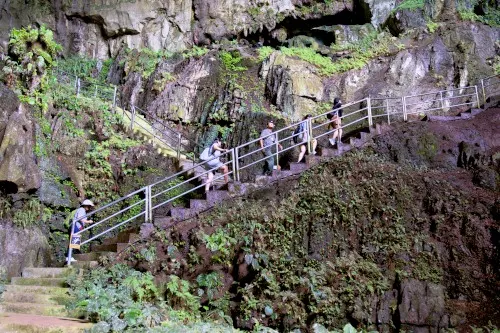
We found some swiftlets inside the cave and various species of bats.
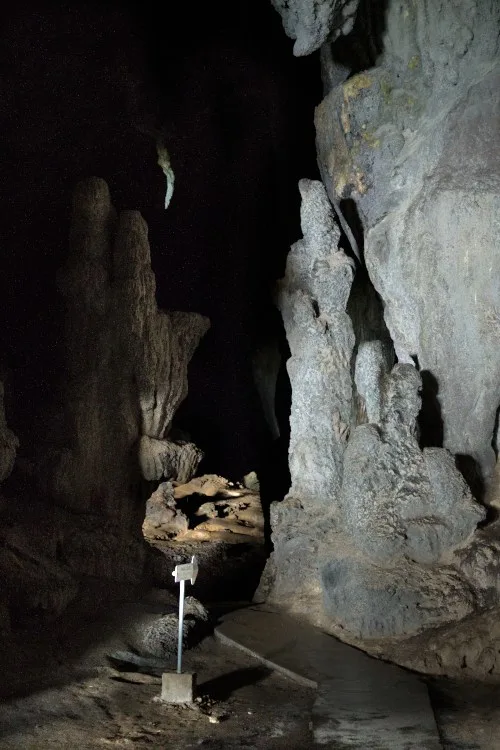
The Chinese community believed Fairy Cave was the home of a Chinese goddess. In particular, a stalagmite structure inside the cave resembles Kuan Yin, the Goddess of Mercy statue.
Read our in-depth article about our visit to Fairy Cave,
7. Wind Cave
Wind Cave is a limestone cave near Bau, a small town in Sarawak, a popular tourist destination.
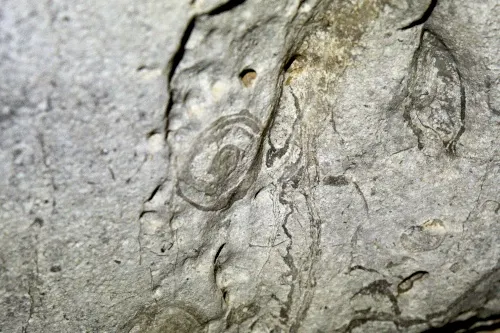
The cave has been developed and equipped with wooden plank walkways. There are several trails available for exploring the cave. The main attractions of the cave include the stunning stalagmites and stalactites formations, the black nest swiftlets, and the various species of fruit bats.

We have written a detailed article about the trip to Wind Cave, which you can read here.
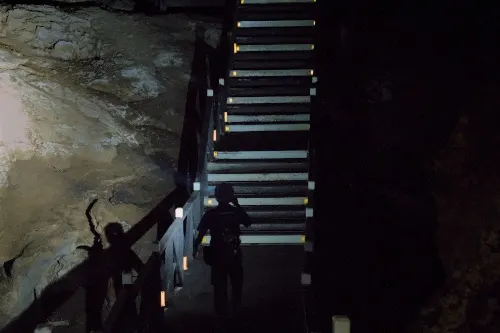
8. Bao Ling Shan Temple
Bao Ling Shan Temple is a Buddhist temple located at the entrance to Serikin Road, about 3km from Bau Town. It can be reached by car in approximately 35 minutes from Kuching. The temple is famous for its Buddha shrine inside a small but well-ventilated cave.
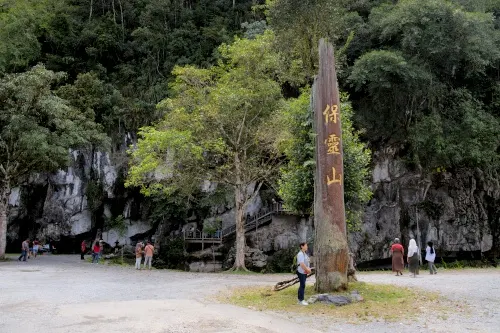
On December 26, 2004, a devastating tsunami hit Sri Lanka, causing immense damage and loss of life. Amidst the widespread destruction, several Buddha statues were discovered to have survived the disaster, capturing people's attention worldwide. The statues were believed to have been protected by divine intervention, remaining untouched amidst the rubble and debris.
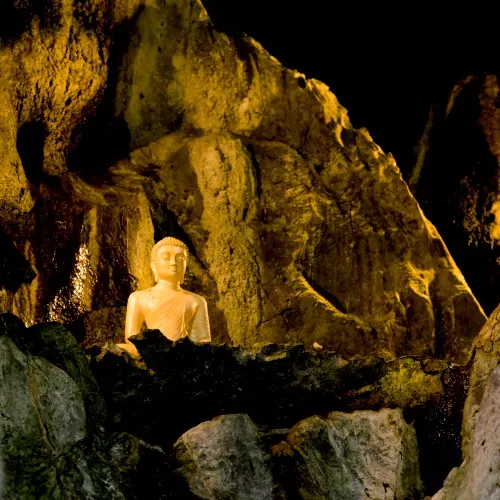
It is believed that the Buddha statue in Bao Ling Shan Temple is one of those that drifted to Sarawak after the tsunami.
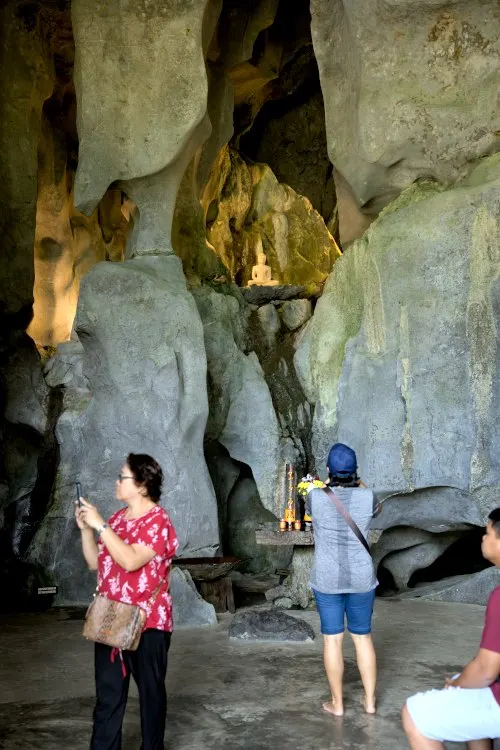
9. Paku Rock Maze Garden
The Paku Rock Maze Garden is an exceptional natural limestone formation carved out by water, which has resulted in a primitive stone forest featuring a natural rock formation located behind a Chinese temple called Shak Bong Kung.
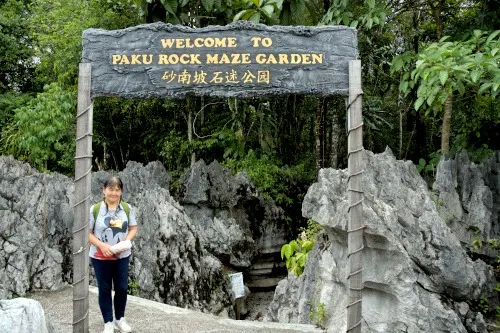
The rock garden can be viewed from the Jalan Kuching-Bau, and the entrance to the maze garden is free of charge.
The formation of the rock garden is attributed to geological processes that occurred during the late Jurassic to Cretaceous periods. The site is mainly made up of limestone, representing an ancient marine ecosystem that was later located inland due to the shoreline retreat.
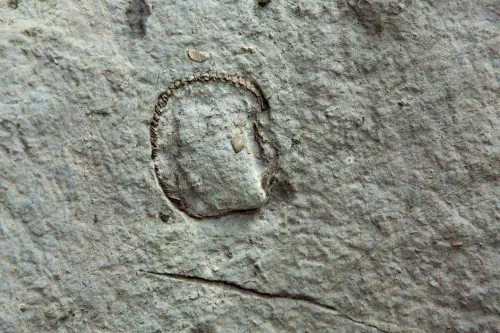
We found some wood fossils that were stuck within the rocks.
Walking between the rocks was surreal, particularly because it was cloudy and drizzling during our visit. Moss is grown on the side of the rocks.
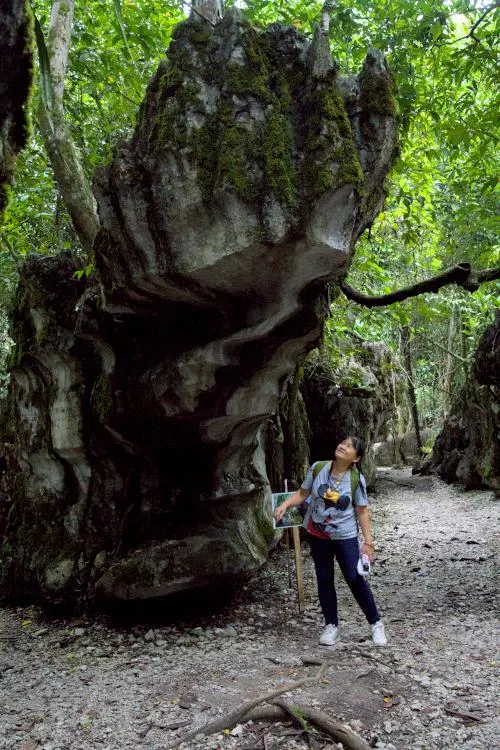
There is a rock formation called mini “Five Fingers Mountain.” It originates from the similar shape of its five ridges. There is another rock formation that looks like a dinosaur, whereas most other rock formations resemble mini pinnacles.
10. Serikin
Serikin is a small town located on the border of Indonesia and Malaysia in the Kuching Division of Sarawak, Malaysia. The town is approximately 15 kilometers from Bau and 80 kilometers from Kuching. The residents of this town call it Kampung Jagoi Serikin.
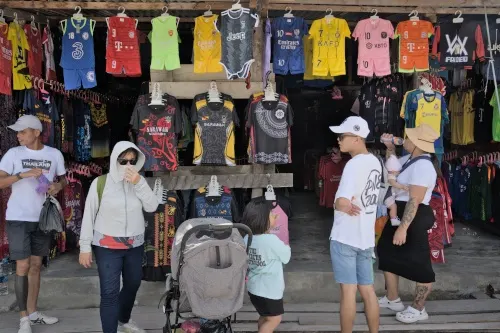
It takes around 1.5 hours to drive to Serikin from Kuching. The market operates only on weekends, from 6 am to 6 pm on Saturdays and 6 am to noon on Sundays. The market is mainly run by Indonesian traders who come across the border to set up their stores. They are permitted to enter without official documents. Still, their movements are restricted to this market, and they cannot enter further than the Pondok Polis (Serikin Police Station).
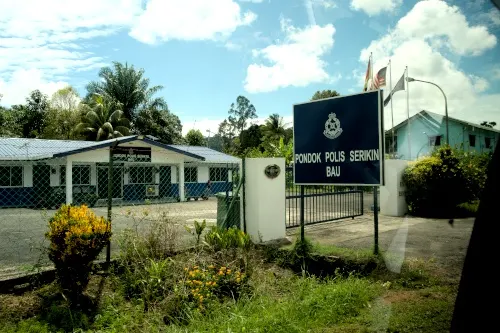
The market occupies a long stretch of stores on both sides of the main road.
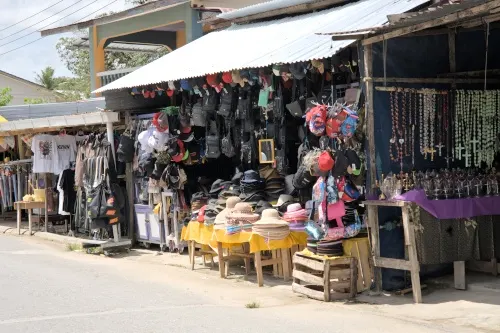
Established in 1992, the market has gained fame for selling many Indonesian products, including handicrafts, clothing, batiks, toys, carpets, electronics, rattan furniture, and fruits.
Although the prices of the goods are very competitive, it is still better to negotiate to get the best deals. The market is a great place to visit, especially if you like bargains and want to buy local handcrafts and souvenirs.
Other places you should visit within the city center of Kuching
We have listed more than ten places worth visiting, including Fort Margherita, the Borneo Cultures Museum, Kuching Waterfront, the Old Courthouse, the Kuching Cat Museum, various cat statues, the Chinese History Museum, and Tua Pek Kong Chinese Temple.
You can access all the articles about our visit to Sarawak here.
